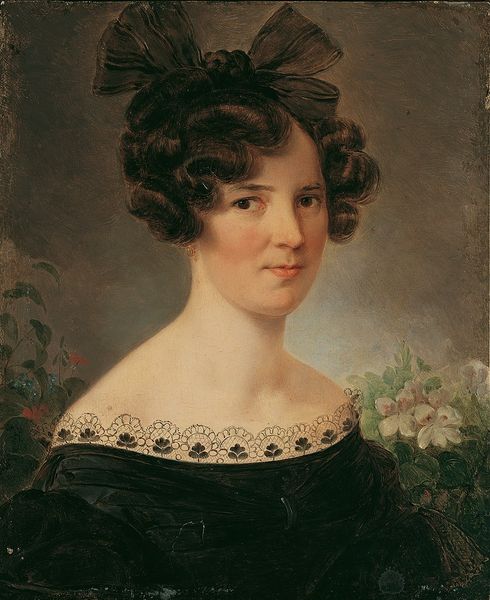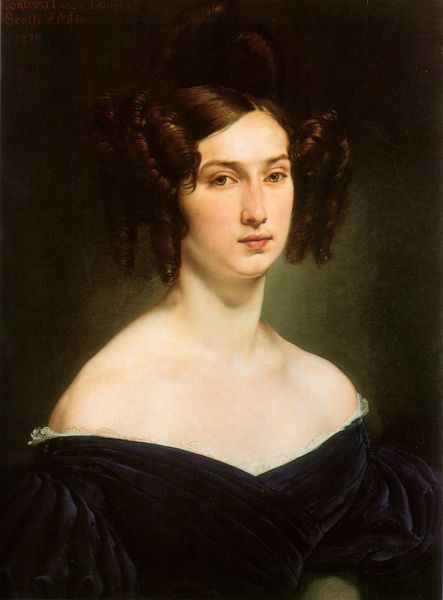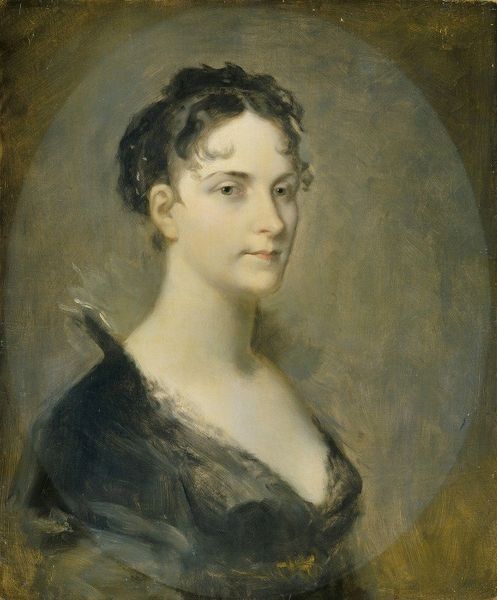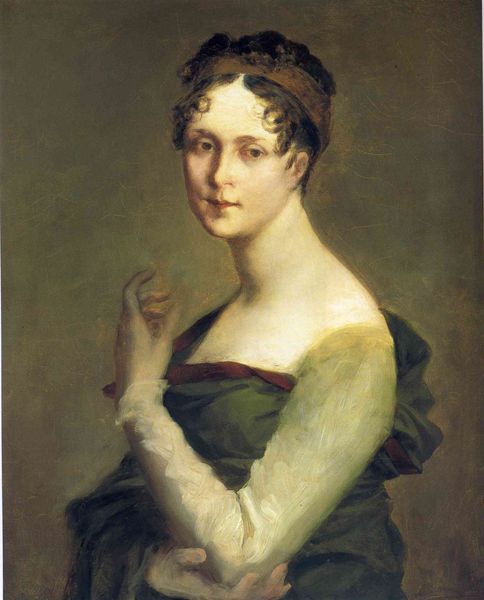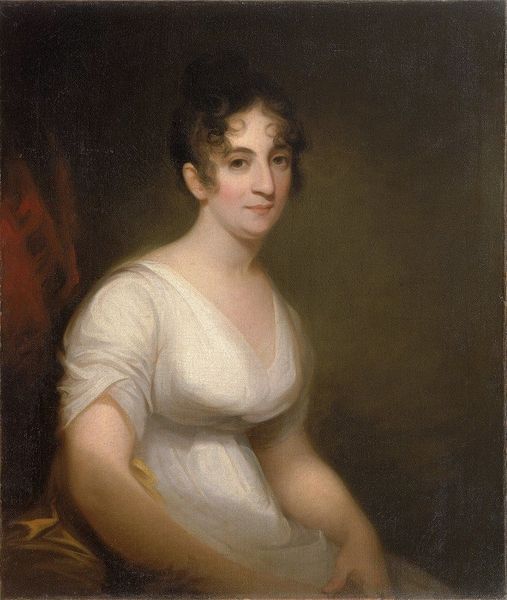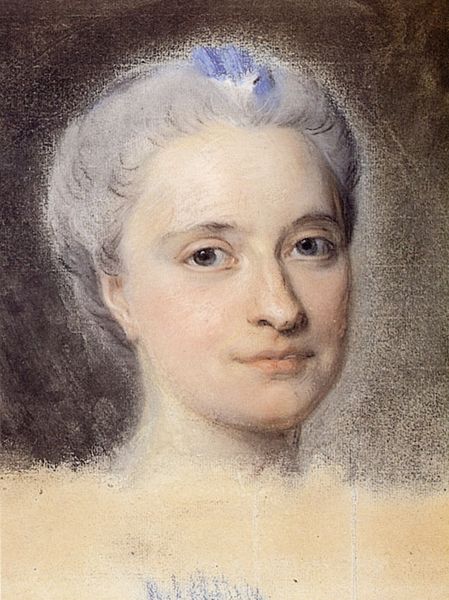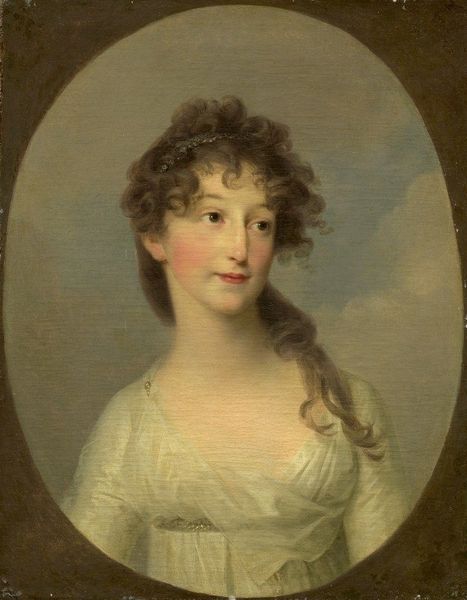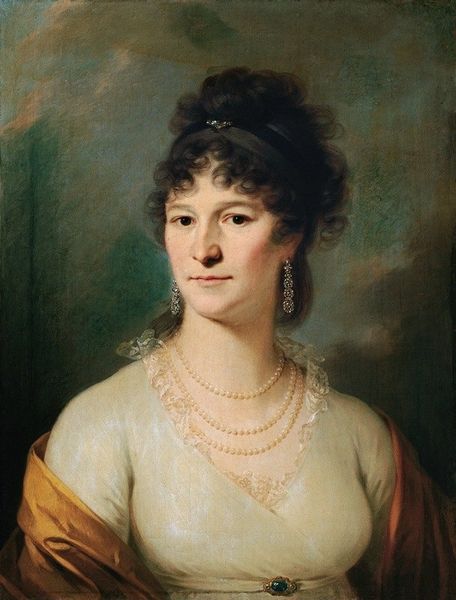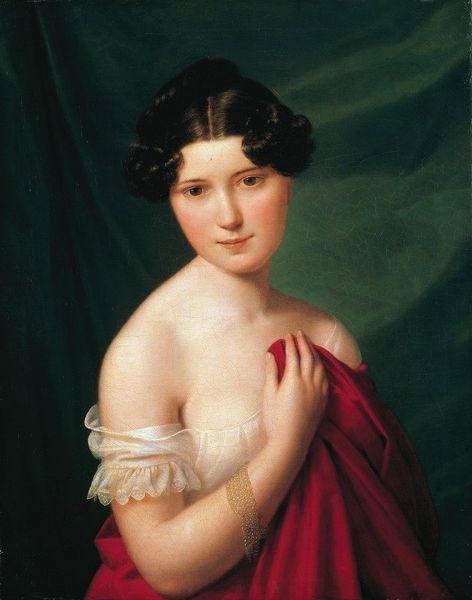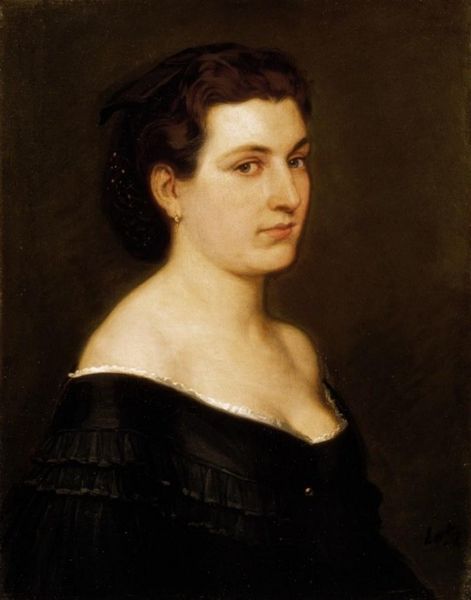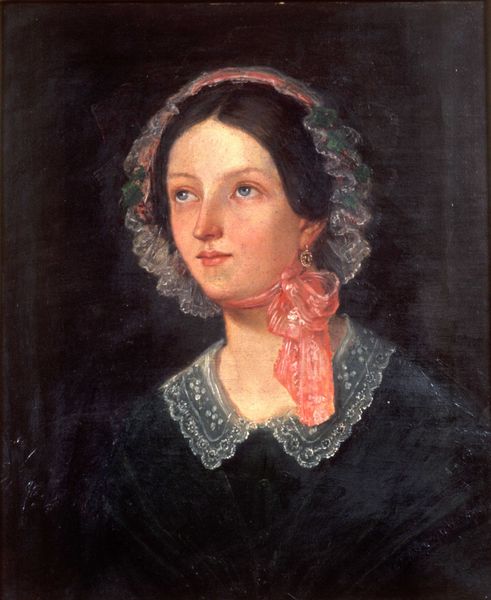
painting, oil-paint
#
portrait
#
painting
#
oil-paint
#
figuration
#
romanticism
#
academic-art
Copyright: Public domain
Curator: Before us is "Miss Carter," an oil painting crafted in 1844 by Thomas Sully. Editor: There's a certain restraint to this portrait that I find compelling, despite the subject's elegant attire; almost as though she's holding herself back from something. Curator: Note how Sully employs a limited palette. The soft pink of her shawl, offset against the darker tones of her hair and the neutral background, focuses our gaze directly on her face, highlighting her composure. The light appears to cascade across her cheek, suggesting ideal feminine beauty. Editor: Yes, there is beauty here but I think the gaze is critical. What do you see when you see "ideal feminine beauty" in a work like this? Consider what constraints, socially, politically, might have produced the effect of constraint you describe. What do you make of this tension when class, race, and gender converge here? Curator: The composition is decidedly Romantic; a celebration of subjective feeling and inner beauty. Notice the way the artist utilizes chiaroscuro to heighten the emotional depth of her gaze, to great expressive effect. Editor: Agreed, there's undeniable artistic skill. Still, it's difficult to ignore the inherent power dynamics at play when representing women during this era, in the middle of a country embroiled in enslavement. Was she simply wealthy? Was her life untouched by the era's political tensions? These are the kind of questions that make simple praise so troubling here. Curator: Ultimately, I'm drawn to the painting's elegant formal balance, its nuanced expression achieved with minimal painterly effects. The essence lies in the skillful manipulation of light and form, showcasing the artist’s virtuosity within the genre of portraiture. Editor: While you locate its importance in its formalism and technicality, it is important to remember that her serenity exists only because it's counterweighted against deep cultural violence. Approaching artworks as objects, in abstraction from real world contexts, is no longer possible for me.
Comments
No comments
Be the first to comment and join the conversation on the ultimate creative platform.
